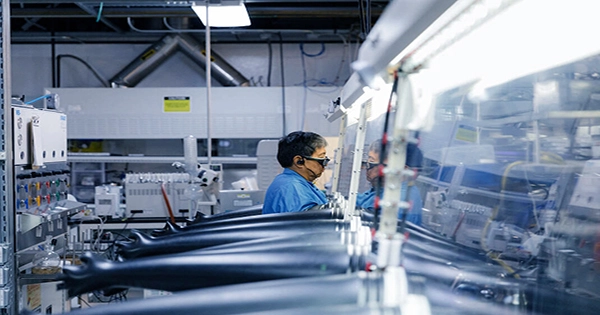Investors in the battery startup SES seem to be satisfied with the company’s maiden earnings report. Through a SPAC merger, the business went public in February. Unsurprisingly, it recorded a loss. And it doesn’t appear to bother its investors. While still trading below the SPAC merger price as of this writing, its shares were up 16.7% at $6.15, surpassing advances in the overall markets earlier in the day.
In the first quarter, the business reported an operating loss of $19.2 million. Most of that, or $15.1 million, was spent on general and administrative expenses, with $4.1 million going to research and development. A net loss of $27 million, or $0.12 per share, was disclosed. SES had $426 million in cash at the end of the quarter and anticipates having enough time to start commercial production in 2025.
All battery companies, including SES, lose money, and it appears that the firm is losing just enough to be competitive yet not too much to deplete its cash reserves prior to having a viable product. Investors appear to be pleased with SES’ balancing act because developing and commercializing a new battery is a protracted, expensive process. Of course, if it spent too much, it may become bankrupt. Furthermore, if it didn’t invest enough, it ran the risk of slipping behind its rivals.
Investors also seem to be applauding QuantumScape and Solid Power, two other battery businesses that went public via SPAC in the past year, with increases of 10% and 13%, respectively. The ratio of general costs to R&D implies that while the company’s lithium-metal technology is still being developed, a growing portion of its cash reserves is being used to create bigger scale facilities in preparation for commercial production.
In fact, the business is continuing to construct its Shanghai Giga site and another facility in Korea, which was disclosed earlier this year, according to CEO Qichao Hu in an interview with TechCrunch earlier this week. The yearly output capacity of the Shanghai plant is now 0.2 GWh, which, according to Hu, is “more than enough” for the current level of production.
In March, he added, “we began constructing cells for Hyundai, Honda, and GM out of our Shanghai site, and out of our Korea location.” The business is testing these cells internally before sharing the results with collaborators. Hu anticipates starting to distribute cells directly to automakers by the first quarter of the next year so they may do their own testing.













